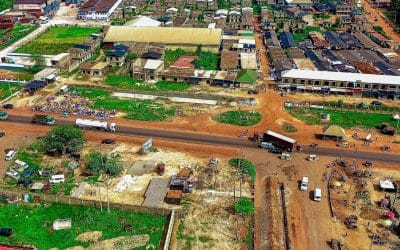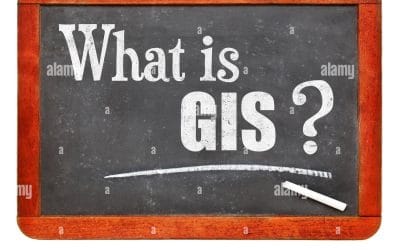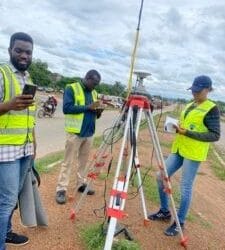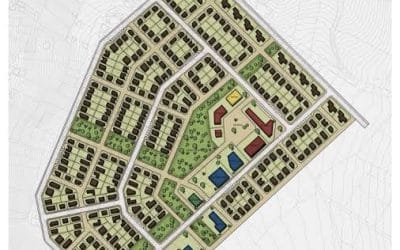GIS / RS PROJECT REPORT: NIGHTTIME LIGHTS
TITLE: ANALYZING URBANIZATION TRENDS IN KANO STATE, NIGERIA USING NIGHTTIME LIGHTS REMOTE SENSING DATA
PREPARED BY: EWENLA ABIMBOLA FAITH
PREPARED FOR: GEOINFORTECH RESOURCES LIMITED
EXECUTIVE SUMMARY
This report presents the application of satellite-derived nighttime lights data to monitor and analyze urbanization trends in Kano State, Nigeria. The study employs data from the VIIRS and sensors to evaluate spatial and temporal patterns of artificial lighting as a proxy for human activity and urban development. Through geospatial analysis and visualization, the report highlights the expansion of urban areas, the intensity of development across localities, and implications for urban planning and infrastructure deployment.
INTRODUCTION
Urbanization is a key driver of socioeconomic transformation, particularly in developing regions. In Nigeria, Kano State is one of the most densely populated and economically significant states in the northern region. However, reliable spatial and temporal data to monitor urban expansion and infrastructure development remains limited. This project proposes to use satellite-derived nighttime lights data to assess urban growth and development patterns in Kano State over time.
OBJECTIVES
- To map and quantify urban expansion in Kano State using satellite-based nighttime lights data.
- To analyze changes in light intensity over time as an indicator of urban growth and infrastructure development.
- To distinguish patterns between urban, peri-urban, and rural areas.
- To provide geospatial insights for urban planning, resource allocation, and infrastructure development.
STUDY AREA
Kano State, located in northern Nigeria, is a key commercial and population center with a long-standing history of urban development. As urban growth accelerates, the need for reliable and continuous data for monitoring urban expansion becomes increasingly important. Traditional methods of urban mapping are often costly, time-consuming, and geographically limited. However, nighttime lights data, which captures artificial illumination on Earth’s surface, has proven to be an effective proxy for assessing urbanization, infrastructure development, and economic activity.

This report explores the utility of nighttime lights data in mapping and understanding urban growth patterns in Kano State from the early 1990s to the present.
METHODOLOGY
Data Collection:
- Software: Google Earth Engine (GEE), ArcGIS Pro, and Microsoft Excel
- Data Source: The Data utilized in the process of this project were sourced from:
- Nighttime imagery (VIIRS-DNB) of kano state from Google earth engine (Year 2016 & 2024).
- Administrative boundaries: From GADM or Humanitarian Data Exchange.
- Esri Land use Land cover (2016 & 2016).
Data Processing:
Data Cleaning: The raster and vector data were firstly clipped to the area of interest, and then the urban areas were extracted from the land use land cover shapefile.
Reclassification: The Nighttime light data was reclassified using the classify symbology (i.e. Natural Jenks) into two classes

Vectorization, Overlay and Area:
The rasters were then converted to vectors (polygons) and then dissolved. An intersect was performed on the two years and two new fields (i.e. change and area) was added to the attribute table of the intersect output.
The new field “change” was used to state the type of change that occurred (e.g. very high – moderate) and area was calculated using the “calculate geometry” tool.
Extracting Urban areas:

“Create Fishnet” was first used to generate lot of sample points and then clipped to kano state boundary. After which “Extract multi values to point” was applied to the Nighttime lights and LULC data of both years respectively. “Select by attribute” was used to select urban areas, and the features were exported.
Visualization:
After analysis, the results were visualised using line chart and bar chart at LGA level. The resulting maps are stated in the Appendices.


Conclusion: Nighttime lights data provides a powerful proxy for urbanization analysis. By applying this method in Kano State, this study will reveal spatiotemporal patterns of urban growth, support data-informed planning, and offer insights into development dynamics in northern Nigeria.





























































































